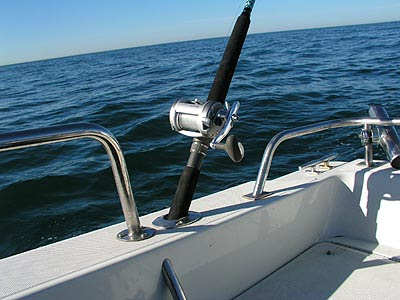
It's "warm water" designation is not completely correct. Some States such as New Mexico list this fish (that was once called "pickerel" in Ontario, Canada) as a warm water species, while the State of Pennsylvania considers it a "cool water" species. In fact, it's temperature range is between roughly 6.6C and 15.5C, with the median value of about 11C an ideal temperature.
Contrast that with the Brown Trout who's temperature range is much broader at between about 6.7C and 23.9C. With this in mind, the Walleye would seem to be even more of a cold water fish than the Brown, often considered to be an inhabitant of crystal clear cold rivers and streams. It may interest some to know that the Brown Trout can tolerate temperatures higher than the the Walleye can.
Although it is not often pursued by the fly angler, it can be caught on a variety of fly patterns either as an incidental catch or when a fly angler specifically targets the species. Most freshwater Walleye anglers know that this fish is a voracious eater of live bait and anglers who specifically target this fish generally use live minnows on their hooks to catch them. With this in mind, we can know as fly anglers what types of patterns are more likely to attract a Walleye.
However, it is not just other fish that Walleye eat. In a study by John R. M. Kelso, Department of Zoology, at the University of Manitoba, all the Walleye that were examined were found to have Gammarus lacustris in their stomachs. What are Gammarus lacustris? These are scuds that many fly anglers will attempt to imitate when fly fishing for rainbow and other trouts.
So we know that using scud patterns is a good bet for targeting Walleye on the fly rod.
However, keeping in mind what most freshwater anglers know about fishing for these species; that they will readily take live bait, the fly angler should try those streamer patterns that imitate local fish that Walleye eat. Walleye will feast on young smolts and any fly pattern that represents these can be effective on Walleye.
In my own experience, fishing the very cold waters of the Athabasca River (which originates in the mountains of Alberta from glacier ice melt and snow runoff), Walleye readily took to leech patterns such as the Viva Zonker and Black Rabbit Strip Leech. Weighted and tied up in a "beefy" style, it is quite possible to consider the Walleye did not see these patterns as leeches, but as small fish.
Whatever the Walleye thought, it was a lot of fun catching this species on the fly rod! And if you're a fly angler and your buddies are heading out with their live bait to target Walleye, don't hesitate to join them and bring along your fly rod.
Many people have the misconception that fly fishing is for trout and salmon only. In fact, there are a number of fly fishing techniques that you can use to catch a wide variety of different fish while using the fly rod!
Source : http://about-flyfishing.com/library/weekly/walleye-fly-fishing-patterns.html





















